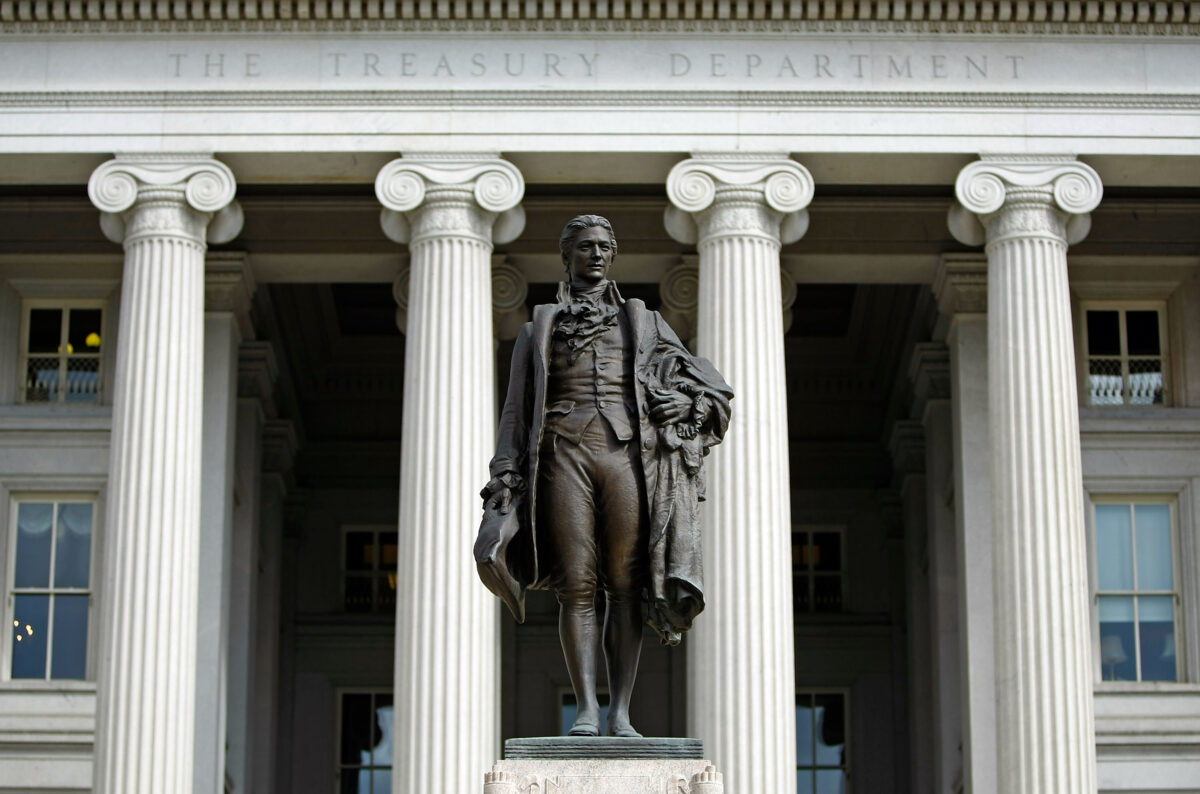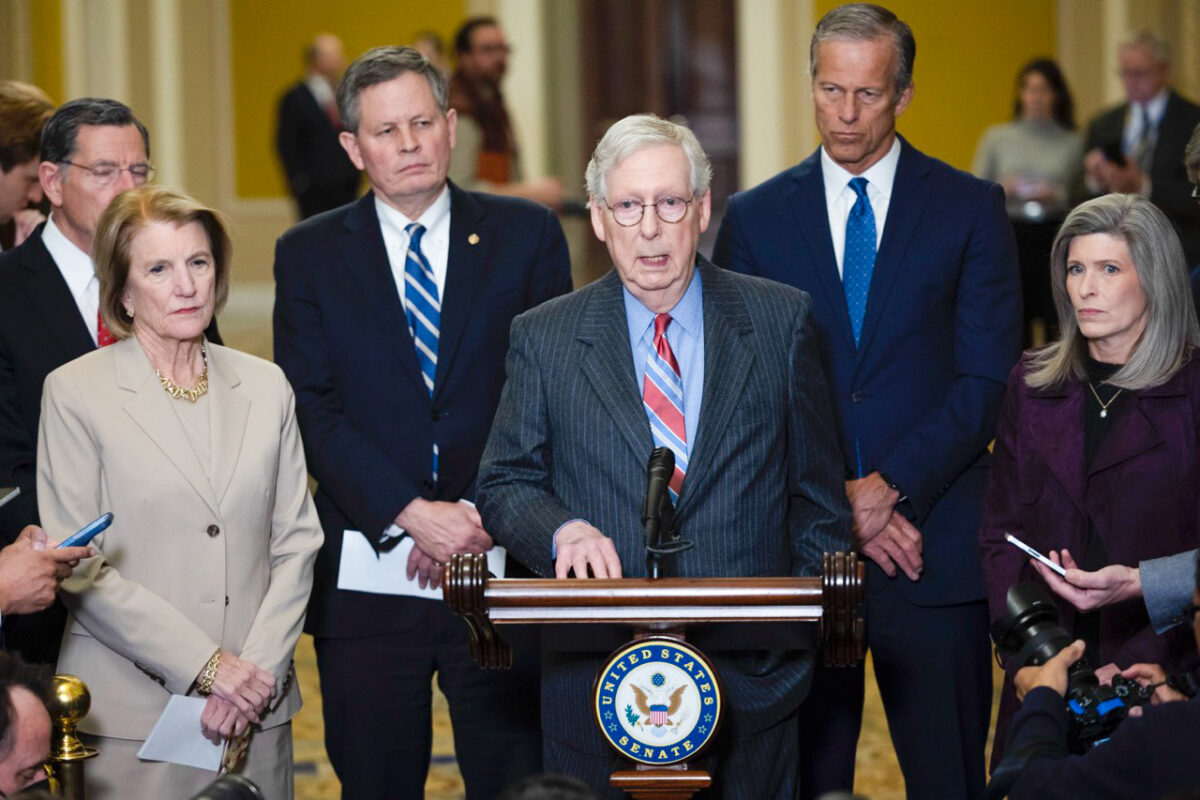
Commentary
It’s easy, if not entirely fair, to explain Alexander Hamilton’s relentless search for fame and power as the outcome of a life begun under very unfavorable conditions.
He was born on Jan. 11, 1757, an illegitimate child on the Caribbean island of Nevis, then a possession of the British Empire. His father deserted young Alexander’s mother when he was 8, and his mother died when he was 11.
Somehow he was apprenticed to a commercial firm, where he showed an astonishing talent for the business. A good-hearted Presbyterian minister “discovered” him and sent him to a New Jersey grammar school. A year later he was accepted by the College of New Jersey (now Princeton University). When that institution wouldn’t allow him to advance at his own accelerated pace, he enrolled in King’s College (now Columbia University), in New York City.
While there, he became wrapped up in revolutionary activities. He published two prominent political tracts, taught himself the rudiments of military science, organized an artillery company, and received a captain’s commission in the Continental Army. In 1780 he married Elizabeth Schuyler, a love match that admitted him to the heights of New York society.
He became Gen. George Washington’s aide-de-camp. In July 1781 he sought and obtained a field command. He fought with distinction in the Battle of Yorktown.
When hostilities ended, he returned to New York and passed the bar examination (1782). He published the notes he had made in his studies for the bar. For many years thereafter they served as a textbook for aspiring New York attorneys.
It took the young man a very short time to reach the peak of his profession.
If you have read this far, it should be obvious by now that Hamilton was a genius—aside from Benjamin Franklin, perhaps the greatest genius among all the prodigious intellects of the Founders.
In 1786, he was elected to the state legislature, and within a few months his fellow lawmakers had appointed him to be a commissioner (delegate) at the Annapolis Convention. In September of that year, the conclave in Annapolis recommended that the states meet in Philadelphia the following May. This meeting became known as the Constitutional Convention.
The Constitutional Convention
The New York legislature elected Hamilton as one of three commissioners to the Constitutional Convention. He still was only 30 years old.
Most of the 12 attending states granted their commissioners full power to recommend a new political system, but New York and Massachusetts limited their delegates to proposing amendments to the Articles of Confederation. Hamilton found this frustrating because he wanted to do much more. On June 18, 1787, he delivered a day-long speech outlining his proposals. These proposals stretched the concept of “republican government” to the breaking point. Hamilton advocated:
- a chief executive elected indirectly for life with an absolute veto over legislation;
- a bicameral legislature with an elected lower house balanced by a senate indirectly elected for life;
- appointment of state governors by the national authorities, with each governor to enjoy an absolute veto over state laws; and
- almost no restraints on the power of the central government.
Hamilton thus located himself on the Founding-era political spectrum (outlined in this series’ first essay) as the most extreme of the “high nationalists.”
The other delegates praised Hamilton’s oratorical performance, but didn’t take his suggestions seriously. Furthermore, when the New York delegates decided how to cast the Empire State’s votes on the convention floor, the other two—who were more scrupulous about the limits on their instructions—usually overruled Hamilton. Frustrated, he left Philadelphia after the convention’s June 29 session. He did not return until Aug. 13. By then, his New York colleagues had abandoned the convention because it was headed in a direction they had no authority to go. This left their state entirely unrepresented.
Hamilton had no authority to represent New York alone, so after Aug. 13 he participated in the deliberations merely as a private citizen, and his contributions were fairly modest. He did successfully suggest that Congress (as well as a convention of states) have power to propose constitutional amendments. And he served on the “Committee of Style,” which oversaw Gouverneur Morris’s work in drafting the Constitution’s final version.
The Ratification Debates
Hamilton’s greater contributions came at the ratification stage. He recruited John Jay and James Madison to compose a series of newspaper op-eds designed to convince New Yorkers to elect pro-Constitution delegates to the state-ratifying convention. Hamilton wrote 51 of the 85 essays and assisted Madison with a few others. They were re-published in a collection known as “The Federalist.”
“The Federalist” has justly become a classic in political theory, but its immediate influence was limited. The essays were written in a style too difficult to be popular; the public preferred the work of more readable authors, such as Hamilton’s Philadelphia friend, Tench Coxe. Moreover, The Federalist failed to persuade New Yorkers to elect a pro-Constitution majority to the state-ratifying convention. The elections produced a more-than-two-to-one majority of opponents.
As the late Clinton Rossiter, the Cornell University political scientist, once observed, “The chief usefulness of The Federalist in the events of 1788 was as a kind of debater’s handbook in Virginia and New York.”
At the New York ratifying convention, held in Poughkeepsie from June 17 to July 26, 1788, Hamilton was among the leaders of the pro-Constitution forces. He delivered several dazzling speeches early in the proceedings. On June 28, he emphasized the limited powers of the federal government and the exclusive prerogatives of the states.
Unfortunately for him, John Lansing, Jr., one of Hamilton’s New York colleagues at the Constitutional Convention, was in the room at the time of Hamilton’s June 28 speech. Lansing rejoined that Hamilton’s present concern for state power was inconsistent with his centralizing comments in Philadelphia. This provoked controversy, which kept Hamilton quiet for the next two weeks and subdued his oratory after that.
Apparently, though, he did assist in swinging the hostile majority into a 30–27 vote in favor of the Constitution.
Hamilton’s Efforts to Re-Write the Constitution
As Lansing suggested, Hamilton’s public reassurances of how the Constitution limited federal power were not fully sincere. About the time the document became public, Hamilton wrote the following in a memorandum to himself:
“If the government is adopted, it is probable general Washington will be the President of the United States. … A good administration will conciliate the confidence and affection of the people and perhaps enable the government to acquire more consistency than the proposed constitution seems to promise for so great a Country—It may then triumph altogether over the state governments and reduce them to an entire subordination, dividing the large states into smaller districts.”
Hamilton’s celebrated achievements as our first Secretary of the Treasury served his wider goal of converting a limited federal government into an entity far more powerful than the Constitution permits.
For example: When trying to convince the public to ratify the document, Hamilton strongly implied (in Federalist No. 17) that agriculture and manufacturing would be exclusively state rather than federal concerns. But after ratification was complete, he sang quite a different tune. In his 1791 “Report on Manufactures,” he advocated federal financial subsidies to favored agricultural and manufacturing interests. To support his case, he cited the Constitution’s Taxation Clause.
But the Taxation Clause (Article I, Section 8, Clause 1) grants power only “to lay and collect Taxes … to pay the Debts and provide for the Common Defence and general Welfare of the United States.” Translated into modern English, this means that Congress has power to levy and collect taxes, but only to (a) store up reserves for future debt-payment, or (b) store up reserves for future spending, but (c) any such spending must be for the public interest rather than for special interests (pdf). The “general Welfare” language limits the purposes for which taxes may be levied. The clause doesn’t authorize any spending other than spending needed to enforce the tax laws.
Yet Hamilton claimed this language leaves “to the discretion of the National Legislature to pronounce upon the objects which concern the general welfare, and for which, under that description, an appropriation of money is requisite and proper.”
Of course, this assertion is nonsense. If it were true, it would void many other provisions in the Constitution, among them the two-year limit on military appropriations (Article I, Section 8, Clause 12). Hamilton’s claim also directly contradicts the representations the Constitution’s advocates—including Hamilton—made to persuade the public to vote for ratification (pdf).
Few of Hamilton’s contemporaries accepted his novel constitutional argument. But as I described in my Epoch Times series, “How the Supreme Court Re-Wrote the Constitution,” eventually the Supreme Court did. In 1936 and 1937, the justices were looking for a way to uphold Franklin Roosevelt’s New Deal spending programs. Without much real analysis they seized on Hamilton’s thesis. That thesis remains the flawed constitutional foundation for most federal social spending today.
Conclusion
After serving in the Washington administration, Hamilton created the Federalist Party. In 1800 he made the statesmanlike move of ensuring that his political opponent Thomas Jefferson was elected president over the unscrupulous Aaron Burr. Subsequently, Burr shot and killed Hamilton in a duel (July 12, 1804).
Hamilton’s contributions to the Constitution’s drafting, adoption, and meaning commonly are over-estimated. But they were substantial enough to earn him inclusion in this series. America also owes him an immense debt of gratitude for his role in the Revolution and for helping President Washington place the new federal government on a secure foundation.
Hamilton is buried in Trinity Church Cemetery in the financial district of New York City. During the (mercifully) short time I worked at a Wall Street law firm, I often devoted part of my lunch hour to keeping him company.
Read prior installments here: first, second, third, fourth, fifth, sixth, seventh.
Views expressed in this article are the opinions of the author and do not necessarily reflect the views of The Epoch Times.

















































